BY DEBAJYOTI CHAKRABORTY
KOLKATA / NEW DELHI, 29 JULY 2022
“The most magnificent creature in the entire world , the tiger is,” Jack Hanna, celebrity zookeeper.
J Charukesi, chief post master general of West Bengal Postal Circle has released a Special Philatelic Cover to commemorate the Global Tiger Day at the historical rotunda of Kolkata GPO on 29 July .
A book on postage stamps on Tiger and a set of six picture post cards along with a special cancellation of the global tiger day has also been released by J.Charukesi.
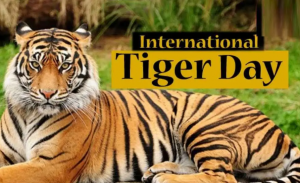
Global Tiger Day also known as International Tiger Day is celebrated worldwide every year on 29 July to promote a global system for protecting the natural habitats of tigers and to raise public awareness and support for tiger conservation issues.
This year, Sundarban Tiger Reserve and Department of Posts, West Bengal Circle has come forward to release the special cover on the world’s most majestic big cat.
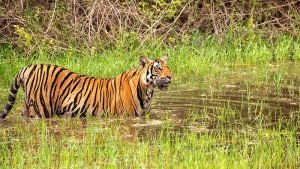
Dr. Jose. T. Mathew, Principal Chief Conservator of Forests , government of westr bengal, Tapan Das, chief conservator of forests and Field Director, Sundarban Tiger Reserve, Niraj Kumar, PMG of Kolkata region were present on the occasion.
https://twitter.com/hashtag/InternationalTigerDay2022?src=hashtag_click
In Mudumalai Tiger Reserve in Tamil Nadu an awareness rally was organised by the forest department along with the school students.
People of all age group will run with Tiger placards in their hands in Gorakhpur.

About a century ago there were about 1,00,000 tigers roaming in the wild which has now come down to 4000, as almost 95 % of the wild tigers have disapperaed. Currently tigers are found in 13 countries. International Tiger Day was established in 2010 at Saint Petersburg Tiger Summit in Russia to raise awareness about the decline of wild tiger numbers, leaving them in the brink of extinction and to encourage the work of Tiger conservation. In the Summit, a declaration was made that Governments of tiger populated countries had vowed to double the tiger population by 2022.

Currently, Siberian Tiger, Bengal Tiger, Malayan Tiger, Sumatran Tiger, and Indo-Chinese Tiger are the few living species. The 13 countries where tigers are found – Bangladesh, Bhutan, Cambodia (locally extinct), China, India, Indonesia, Lao PDR (locally extinct), Malaysia, Myanmar, Nepal, Russia, Thailand, and Vietnam (locally extinct).
TIGERS FOR A HEALTHY TOMORROW:
India has been a global success when it comes to protecting the magnificent Royal Bengal tiger. Home to 70% of the world’s tigers, it is our responsibility to save them without stalling years of progress.
Tigers have long held a sense of mysticism and intrigue for their power, solidarity, lives, and courage. However, danger still lurks in large magnitude for their survival.

WWF India’s association with tiger conservation dates back to the early 1970s – when it played an instrumental role in implementing ‘Project Tiger.’ Launched by the Government of India in 1973 – the project was the first-ever tiger conservation programme in the world!
HOW WWF INDIA IS SECURING SAFER HAVENS FOR WILD TIGERS?
We have been working for close to five decades to protect wild tigers in the country. Having an on-ground presence in most of the tiger landscapes in India, we work in collaboration with many stakeholders. These include various state forest departments, local communities, partner organisations, and media, among others.
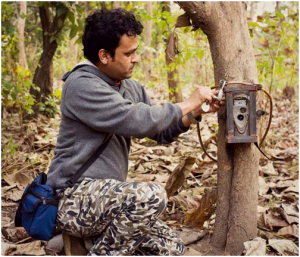
Tracking, tracing, and monitoring the big cat-
Found in dense forests, grasslands, and mangroves to snow-capped mountains – these elusive big cats are hard to spot and challenging to track. We work with state forest departments and the NTCA to monitor these feline species across tiger landscapes. Our field teams are involved in setting up camera trappings at great lengths to study the behaviour and movement of tigers. Such efforts will help estimate population size, trends, and other demographics for tigers, co-predators, and prey.

Empowering governmental agencies-
WWF India always believe in equipping various governmental agencies and stakeholders with modern patrolling technology and infrastructural tools to protect tigers. Some of our key actions include providing patrolling vehicles, field clothing such as jackets, boots, flashlights, metal detectors, GPS units, and walkie-talkies, among others, to many state forest departments. Additionally, we also help construct anti-poaching camps and wireless towers to tackle poaching issues in the country.
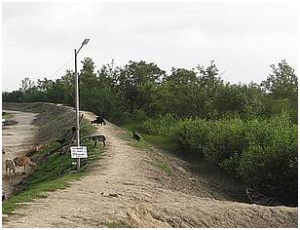
Reducing negative human-tiger interaction-
WWF India work closely with local communities living around tiger habitats to reduce negative human-tiger interactions. Likewise, immediate financial support is provided as interim relief to victims in case of loss of cattle and ex-gratia payment during an unfortunate human injury or death event. This interim relief helps appease sudden anger and controls the retaliatory killing of tigers by the local communities who have suffered losses.
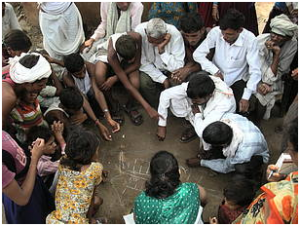
Working with local communities-
Communities are at the heart of our tiger conservation efforts. The success of our tiger conservation measures depends on the active engagement of local communities living around Tiger Reserves. Our comprehensive sustainable livelihood programmes encourage and enable local communities to reduce their high dependency on forests for natural resources.
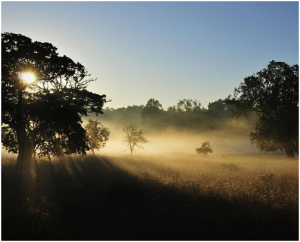
Securing critical wildlife corridors –
WWF India works in critical tiger corridors connecting 21 Protected Areas across India. Our extensive corridor conservation initiatives help connect essential wildlife corridors and develop their management plans to address more significant and complex conservation issues. Apart from that, we continuously engage with multiple government agencies to mitigate existing and planned linear development impacts.

Curbing illegal wildlife trade –
WWF India also jointly work with partners such as TRAFFIC India and Wildlife Crime Control Bureau to detect and curb illegal wildlife trade. Our combined efforts aim to monitor and investigate illicit wildlife trade, and provide information to stakeholders for effective conservation policies. Other interventions include conducting regular capacity building workshops for enforcement agencies on wildlife monitoring, wildlife law, anti-poaching, illegal wildlife trade and use of advance technology to combat poaching.
BIG CAT TALES :
- A tiger’s roar is impressively loud
A tiger’s roar (110-114 dB) can be heard from two miles away. - They are quite fast too
Tigers can move at a speed of 40 mph. - They are the world’s largest cats
The average tiger weighs 800.278 pounds. - Hunting takes a while to learn
A cub can only hunt on its own after turning two or three. - India has the largest tiger population
Up to 70% of the world’s wild tiger population is in India. - Average lifespan – 10 to 15 years in wild and 22 years in captivity.
- Adult Tigers are solitary animals.
- India is the land of Tigers – about 70 to 80 percent of the tiger population are found in India. Uttarakhand is the only state in India, where tigers exists in every district.
- On Sep. 5, 2022, the second Global Tiger Summit is slated to be held in Vladivostok, Russia.

Advertisement:


































Add Comment